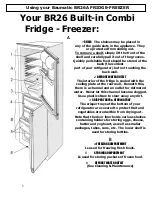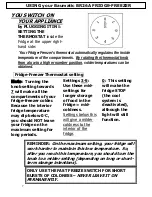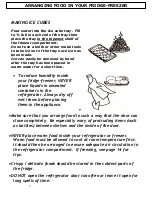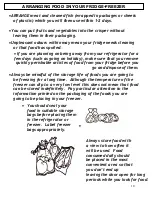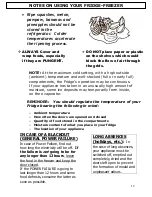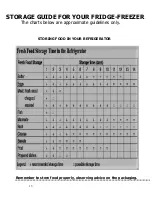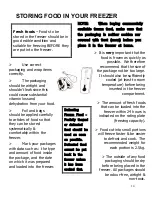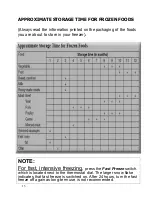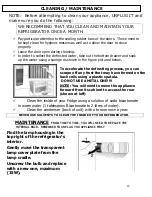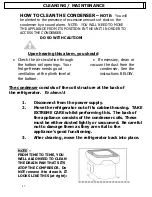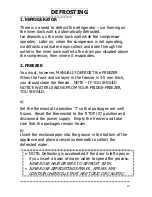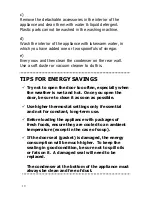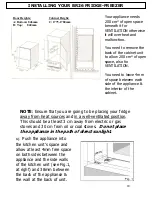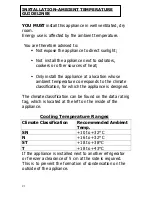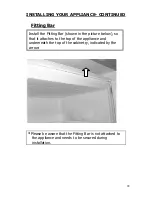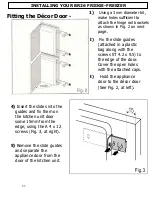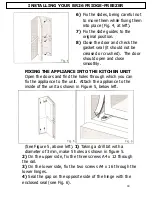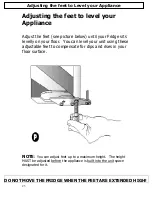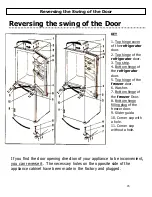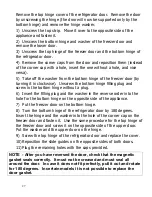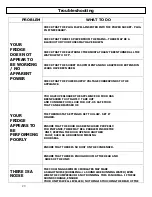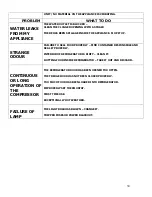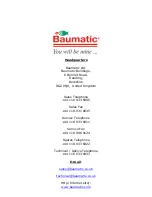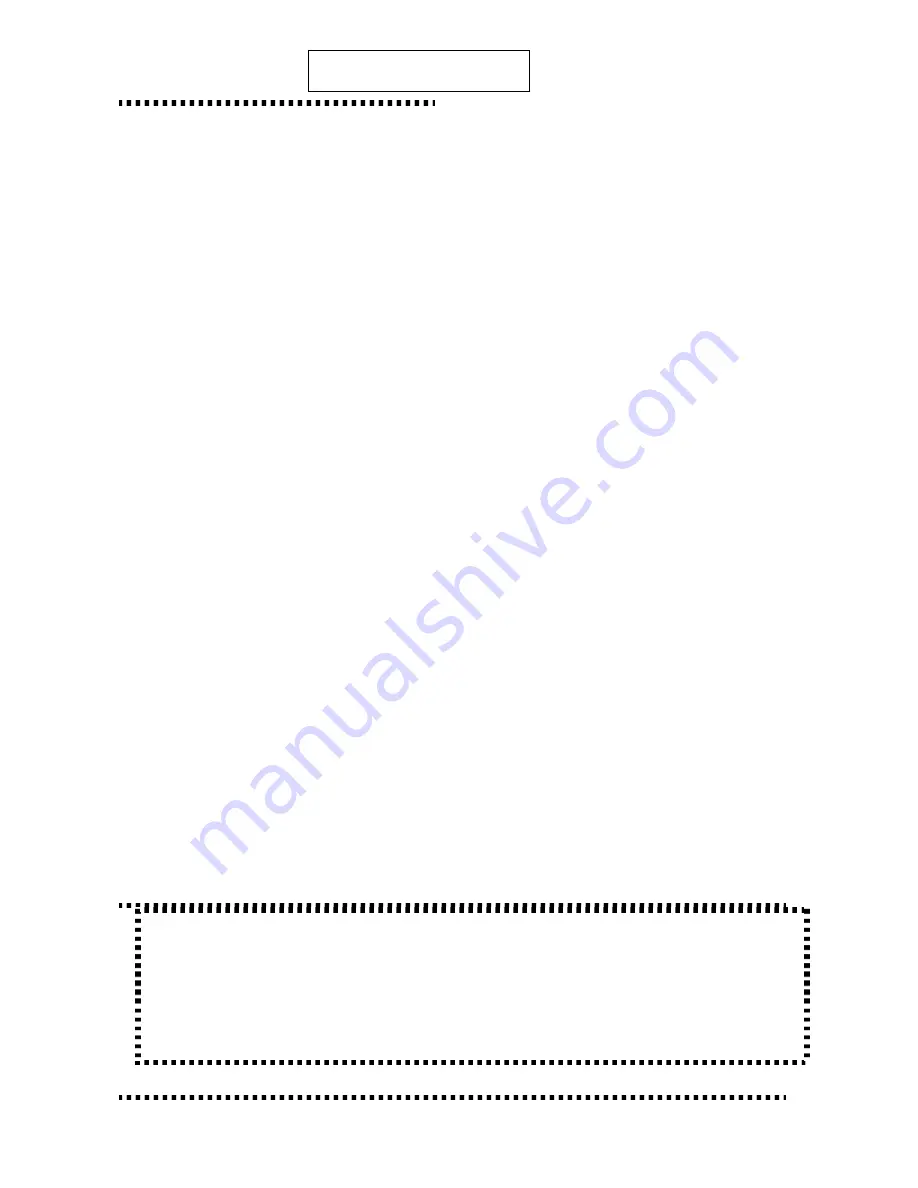
18
1.
REFRIGERATOR
There is no need to defrost the refrigerator – ice forming on
the inner back wall is automatically defrosted.
Ice deposits on the inner back wall while the compressor
operates. Later on, when the compressor is not operating,
ice defrosts and water drops collect and drain through the
outlet in the inner back wall into the drain pan situated above
the compressor, from where it evaporates.
2.
FREEZER
You must, however, MANUALLY DEFROST the FREEZER
When the frost and ice layer in the freezer is 3-5 mm thick,
you should clean the freezer. NOTE – IF YOU SHOULD
NOTICE WATER LEAKING FROM YOUR FRIDGE-FREEZER,
YOU SHOULD:
a)
Set the thermostat to position ‘7’ so that packages are well
frozen. Reset the thermostat to the ‘STOP (0)’ position and
disconnect the power supply. Empty the freezer and take
care that the packages remain frozen.
b)
Insert the enclosed pipe into the groove in the bottom of the
appliance and place a vessel underneath to collect the
defrosted water.
•
NOTE: Defrosting is accelerated if the door is left open or
if you insert a basin of warm water to speed the process.
NEVER USE HAIR DRYERS TO DEFROST WITH.
•
NEVER USE DEFROSTING SPRAYS. SPRAYS MAY
CONTAIN CHEMICALS THAT ARE TOXIC OR CAUSTIC.
DEFROSTING


